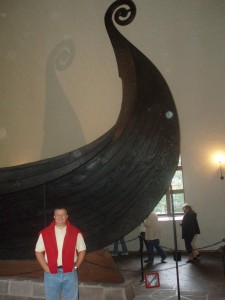 Yesterday’s blog post titled “Hey board members: Sit – Lay Down – Roll Over” looked at board members who agree to “sit” on non-profit boards but don’t seem to understand they’ve been asked to “serve” on those boards. So, I developed an online survey and randomly emailed 32 board volunteers. In that survey I asked questions about their non-profit’s board development practices and their opinion on how to recruit more engaged board volunteers. I want to thank the 17 individuals who took a little time out of their day to respond to the questionnaire. I will share the results of my unscientific questionnaire with you today, tomorrow and Thursday.
Yesterday’s blog post titled “Hey board members: Sit – Lay Down – Roll Over” looked at board members who agree to “sit” on non-profit boards but don’t seem to understand they’ve been asked to “serve” on those boards. So, I developed an online survey and randomly emailed 32 board volunteers. In that survey I asked questions about their non-profit’s board development practices and their opinion on how to recruit more engaged board volunteers. I want to thank the 17 individuals who took a little time out of their day to respond to the questionnaire. I will share the results of my unscientific questionnaire with you today, tomorrow and Thursday.
My first question to board volunteers was: “Does the non-profit board on which you serve operate with a board-approved, written Board Development Plan?” Here were their responses: 14 said YES, 2 said NO, and 1 said I don’t know.
I don’t know about you, but my heart is uplifted to see so many “yes” responses because non-profit agencies will NEVER recruit engaged board members to “serve” on their boards without a written strategy in place. In my opinion, organizations need to have a written board development plan that spells out how to identify, prioritize, recruit, orient, recognize, and evaluate potential prospects and actual board volunteers. I am reminded of this old proverb, “Those who fail to plan, plan to fail.”
My second question to board volunteers was: “Does the non-profit board on which you serve evaluate board volunteers every year?” Here were their responses: 9 said YES and 8 said NO.
These responses tell me that many board development plans probably only focus on recruiting and very little else. Board development plans that don’t have an annual volunteer evaluation component are missing an opportunity in my opinion. I suspect the biggest reason many plans don’t call for annual evaluations is because people hate to be judged. I suggest metrics such as: board meeting attendance, committee meeting attendance, fundraising participation (cultivation, solicitation and stewardship), and volunteerism. The annual board volunteer evaluation doesn’t have to be judgmental . . . it can be designed as a way to: 1) look back and celebrate their contributions and 2) ask them how it is going and what needs to change in the upcoming year for their volunteerism to be meaningful and rewarding. I’ve personally found that volunteers who are disengaged typically use their annual evaluation meeting to quit or make the necessary adjustments to engage at a higher level.
My third question to board volunteers was: “If you answered YES to the previous question, please check all forms of evaluation that your organization uses to evaluate board members.” Here were their responses:
- 8 respondents said: Every board volunteer completes a self-evaluation once per year”
- 8 respondents said: “The Board Development Committee completes an evaluation on each board member once per year”
- 4 respondents said: “Every board member is asked to complete an evaluation focused on the entire board’s effectiveness”
Multiple board evaluation tools are effective. Self-evaluation allows volunteers to take a good hard look in the mirror at themselves, and peer evaluation provides an external point of view. When done in conjunction with each other, the evaluation process can be powerful. When only one form of evaluation is used, it is like a peanut butter and jelly sandwich without the peanut butter.
Tomorrow I will share a number of respondents’ answers to this question: “How would you answer the question posed in the Facebook message from my non-profit friend? As a reminder, her question was “What can we do to help shift that mentality – to help professionals and individuals with the means to give that it is a SERVICE to the greater good, not just a spot to occupy around a conference room table?” Stay tuned because I assure you the answers are interesting!
If your organization uses an annual board volunteer evaluation process, what are your evaluation metrics? How do you conduct your year-end meetings? Who is involved? Do you think it is effective and why do you think that? Please use the comment box and weigh-in because we can all learn from each there.
Here is to your health!
Erik Anderson Owner, The Healthy Non-Profit LLC eanderson847@gmail.com http://twitter.com/#!/eanderson847 http://www.facebook.com/eanderson847 http://www.linkedin.com/in/erikanderson847












